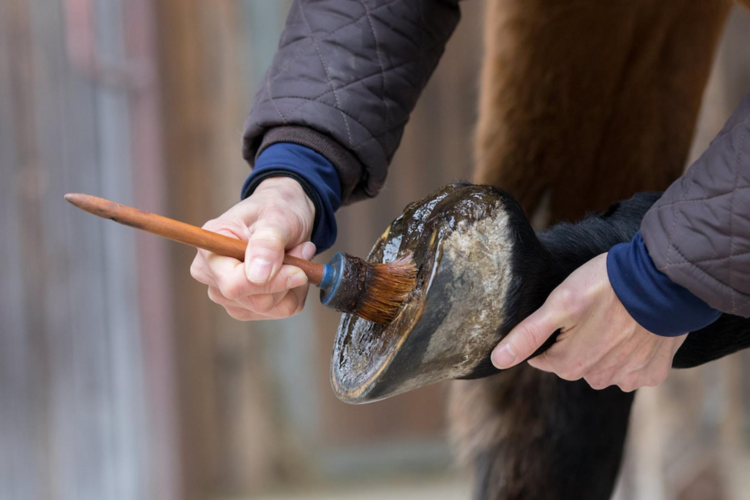As a horse owner, ensuring that your horse is happy and healthy is your priority, but there is one condition that we should all be aware of – laminitis. Laminitis is a condition that affects your horse’s hooves, causing pain, discomfort, and physical changes to the hoof that can impact your horse’s quality of life. Below, we’ll look at how to spot mild laminitis and why you must act quickly if you suspect your horse is suffering.
Understanding laminitis
As a horse owner, laminitis will be something you’re aware of and always looking out for. This debilitating condition affects the horse’s hooves, causing pain and discomfort. This happens as the soft tissue structures— the laminae – that connect the hoof wall to the bones within the hoof become inflamed. This tissue is crucial when it comes to upholding the integrity of the hoof, as well as its function.
Laminitis can range from mild to severe, depending on the initial symptoms. Mild laminitis may be seen as subtle discomfort, whereas severe laminitis can result in the rotation of the pedal bone so it appears to sink through the sole of the foot. It’s essential that you can identify the signs and symptoms of laminitis before it reaches a severe stage so you can manage the condition and safeguard the well-being of your equine companion.
Signs and Symptoms
Identifying the signs and symptoms of mild laminitis is essential for horse owners. While mild cases of the condition may not be as easy to spot as horses suffering severely, there are warning signs to look out for that require immediate attention. Signs to look out for that may indicate mild laminitis include:
- Behavioural changes: Subtle changes in a horse’s behaviour, including stance. Look out for changes in gait, like a shortened stride or a hesitant walk.
- Heat in hooves: Checking if your horse’s hooves are hot can help determine mild laminitis. If one hoof is hotter than the other’s,this could indicate a problem.
- Digital pulse: Checking your horse’s digital pulse can also help you identify mild laminitis – if the pulse is stronger than usual, this could be an indication of laminitis.
- Reduced movement: If your horse is suddenly reluctant to move or exercise normally, this could indicatethat they’re uncomfortable and suffering from mild laminitis.
Risk factors
Identifying the signs and symptoms of laminitis is crucial so you can seek veterinary advice as soon as possible. If mild laminitis is left unaddressed, it can have severe consequences, such as:
Progression to severe symptoms: Mild laminitis can rapidly worsen without intervention if left unaddressed. As the inflammation continues, the soft tissue within the hoof can become increasingly compromised, potentially causing pedal bone rotation or sinking.
Chronic pain and discomfort: As laminitis progresses, pain can worsen for your horse. The damaged laminae can result in the separation of the hoof wall from the underlying structures. This can result in pain with every step your horse takes, affecting mobility and quality of life.
Hoof changes: Laminitis can cause changes within the hoof, including sinking of the pedal bone and rotation. These hoof changes can be permanent if not identified early and may require surgical intervention.
Secondary health issues: Laminitis can impact your horse’s overall health and well-being, and the pain and stress brought on by the condition can cause other health problems such as weight loss, immune system suppression, and increased susceptibility to infections.
Lameness: Leaving laminitis untreated can lead to permanent lameness. This would impact your horse’s quality of life, reducing their ability to perform and exercise normally, and it may become difficult to lead a fulfilling life.
Steps to take when laminitis is suspected
Spotting mild laminitis is essential to reducing the chance of the condition progressing. If you think your horse may be suffering from laminitis, the first step is to contact a veterinarian. This way, they can confirm your suspicions and offer the best guidance. You should also look closer at your horse’s diet and adjust it where necessary, especially if it contains excessive carbs and sugars. Be sure to limit your horse’s intake of lush pasture to reduce sugar intake and offer good-quality hay with a low-carb content. Any changes to your horse’s diet should be made slowly to reduce the chance of digestive issues.
You should also provide your horse with somewhere comfortable to rest, like a soft, well-bedded stall or enclosure, to reduce stress on the hooves. Ensure you follow your vet’s recommendations to help your horse navigate this potentially debilitating illness.




